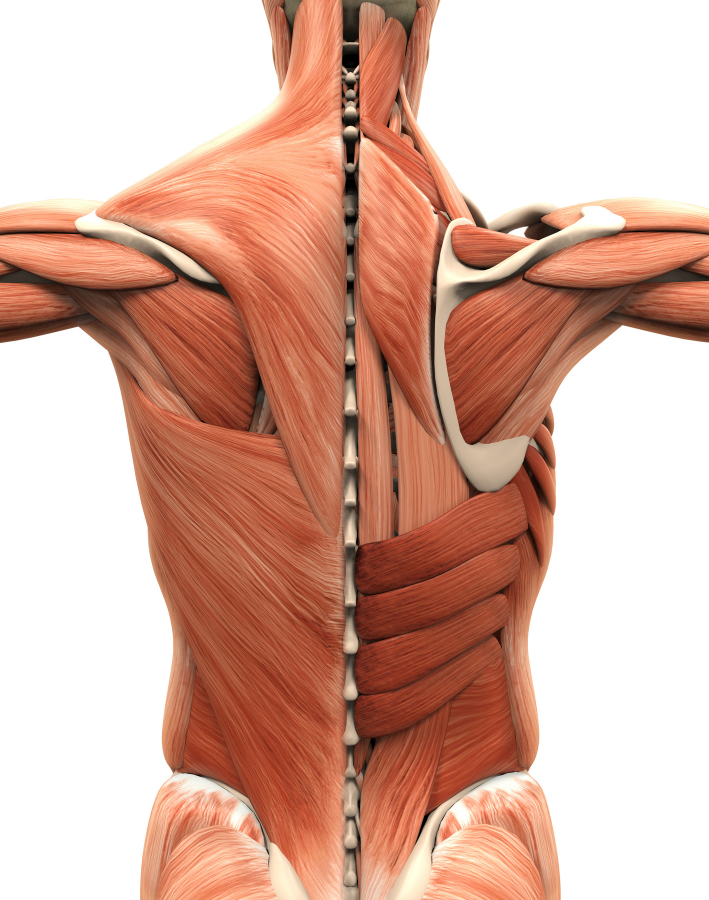Current Research-What Causes Thickened Fascia

Article At A Glance
There are lots of rather boring studies dealing with the fact that as we age we tend to get stiffer. “Age-related Changes in Mechanical Properties of Human Abdominal Fascia” is one such study that I will spend five seconds on just to make a point. While it suggests that decreased range of motion may be related to thickened fascia, there’s one major problem with the study. Read on.
The authors stated: “The purpose of this study is to assess and model age-related changes in the mechanical properties of human fascia. The samples were divided into three age groups: group A, up to 60 years; group B, 61-80 years; and group C, 81-90 years. A uniaxial tensile test was applied to fascia specimens cut perpendicular and parallel to fibers. The secant modulus at five percent strain, the maximum stress, and the stretch at maximum stress were calculated from the stress-stretch ratio curves. The results indicated an increase in the secant modulus with the increased age. The trend is clearer in the longitudinal direction.”
How to Read the Findings
 First, the “secant modulus” of elasticity is from physics and is a way of measuring elasticity. Second, the results were exactly what we would expect: as people got older (or at least as the samples came from older deceased people) they tended to get less elastic, less flexible, and less stretchy.
First, the “secant modulus” of elasticity is from physics and is a way of measuring elasticity. Second, the results were exactly what we would expect: as people got older (or at least as the samples came from older deceased people) they tended to get less elastic, less flexible, and less stretchy.
And lastly, here is the problem with the hundreds upon hundreds of similar studies. They are done in vitro, meaning outside of their normal biological context, as opposed to the opposite—in vivo or “in life.” The difference is huge. How is a cadaver or tissue sample going to approximate what is going on in a living organism? Correct. It cannot, which is always the major limitation of cadaver studies. However …
Although there are plenty of ways to test flexibility and range of motion, what might be a way to test for thickened fascia in a living subject? Can anyone say “ultrasound?”
Diagnostic Ultrasound Detects Thickened Fascia in Living Tissue
Diagnostic ultrasound—do not confuse it with the ultrasound machines that some chiropractors and therapists still treat with—is not only inexpensive and non-invasive, research is showing that it has not been used even remotely near its capacity to image injured or “thickened” fascia. Speaking of thickened fascia, the January 2019 issue of the Journal of Anatomy (“Fascia Thickness, Aging, and Flexibility: is there an Association?”) dealt with this very issue in a study by renowned fascia researchers, Wilke and Stecco.
In a study considered the first of its kind, the authors took healthy subjects, both young (early 20s) and old (70ish), and then took a lot of measurements. Using ultrasound they compared the thickness of various areas of fascia to the range of motion of particular areas/joints. Before we discuss conclusions, listen to what these authors said about ROM. “Range of motion (ROM), the maximal distance over which a joint can be moved, represents a significant hallmark of musculoskeletal health….” Furthermore, these ranges of motion are determined by “international guidelines.”
Why do I bring this up? Because I do not see ranges of motion being checked anymore (and when they are, they often provide extremely deceptive results. Allow me to give you an example of the former.
Why Not Use Range of Motion as a Diagnostic Tool?
 I had a woman almost the exact age as me (the mid-50s) in the office this week. I had seen her 10 years ago for long-standing headaches and neck pain that no one else had been able to help her with. After a decade, her headaches and neck pain were back so she decided to come to see me again. The range of motion of her neck was literally between a quarter and a third of normal. In other words, it was grossly deficient. Dangerously deficient. This is despite just having just had her yearly physical examination.
I had a woman almost the exact age as me (the mid-50s) in the office this week. I had seen her 10 years ago for long-standing headaches and neck pain that no one else had been able to help her with. After a decade, her headaches and neck pain were back so she decided to come to see me again. The range of motion of her neck was literally between a quarter and a third of normal. In other words, it was grossly deficient. Dangerously deficient. This is despite just having just had her yearly physical examination.
It certainly does not surprise me that her neck ranges of motion were ignored (checking them takes all of 20 seconds if you are slow). But considering that her doctor would have been should have been aware of this for a very long time, I have to shake my head.
How Thickened Fascia Relates to Range of Motion
 The authors came to some interesting, but certainly not unanticipated conclusions about thickened fascia and range of motion. Here we go, in cherry-picked fashion.
The authors came to some interesting, but certainly not unanticipated conclusions about thickened fascia and range of motion. Here we go, in cherry-picked fashion.
“Recent research has revealed an association between increased fascia thickness and reduced joint flexibility in patients with chronic pain. In addition to other factors (e.g. hydration status and contractile cell activity), the tensile stiffness of tissue is dependent on its cross‐sectional area. A thicker fascia might, therefore, be associated with restricted ROM. Such a relationship has been found in neck patients. The present study aimed to investigate the possible association of fascia thickness and flexibility in a healthy population. As decreased flexibility and increased fascial stiffness have been reported in old individuals, the additional hypothesis was tested that older adults display a higher fascial thickness.
“Systematic between‐group differences of fascia thickness and variable associations (i.e. fascia thickness and flexibility) were detected. Young adults exhibited higher fascia thickness of the anterior and posterior lower leg, anterior thigh, and abdominal wall (+12.3–25.8%). Conversely, older participants showed higher thickness in the lumbar spine (+40.0–76.7%). Correlations of both body mass and fascia thickness, as well as flexibility and fascia thickness, were found. Age‐related changes in fascia thickness may be a contributing factor of restrictions in joint range of motion. Further study delineating the cause-effect triangle of body mass index, flexibility and fascia thickness is necessary.”
Detecting Thickened Fascia May Help Practitioners Treat Pain Conditions
 Remember this because, in my next post, I am going to show you how to leverage these conclusions so that you can help your cause in DIY fashion! Also, realize that these authors finished by suggesting that ultrasound could easily and inexpensively be incorporated into examinations for the multitudes of you trying to cope with unrelenting pain. “In sum, fascia thickness may become a valuable outcome parameter in the prevention and treatment of musculoskeletal disorders, such as neck or back pain….” Unfortunately, there is just too much money to be made using technology clinics already have in-house (MRI, x-ray, CT).
Remember this because, in my next post, I am going to show you how to leverage these conclusions so that you can help your cause in DIY fashion! Also, realize that these authors finished by suggesting that ultrasound could easily and inexpensively be incorporated into examinations for the multitudes of you trying to cope with unrelenting pain. “In sum, fascia thickness may become a valuable outcome parameter in the prevention and treatment of musculoskeletal disorders, such as neck or back pain….” Unfortunately, there is just too much money to be made using technology clinics already have in-house (MRI, x-ray, CT).
Also, read...
Dr. Ray Long: How to Enhance Your Breathing Capacity During Yoga
Yoga Anatomy: The Adductor Muscles in Downward Facing Dog Pose
Yoga Anatomy: Release the Internal Rotators for a Deeper Lotus Pose
Related courses
Breath as Medicine: Yogic Breathing for Vital Aging
Yoga and Myofascial Release: Releasing Chronic Tension with the Bodymind Ballwork Method

Dr. Schierling is a licensed chiropractor and world-renowned chronic pain specialist. Dr. Schierling specializes in a holistic approach to helping end his patients’ chronic pain that includes Scar Tissue Remodeling Therapy.



